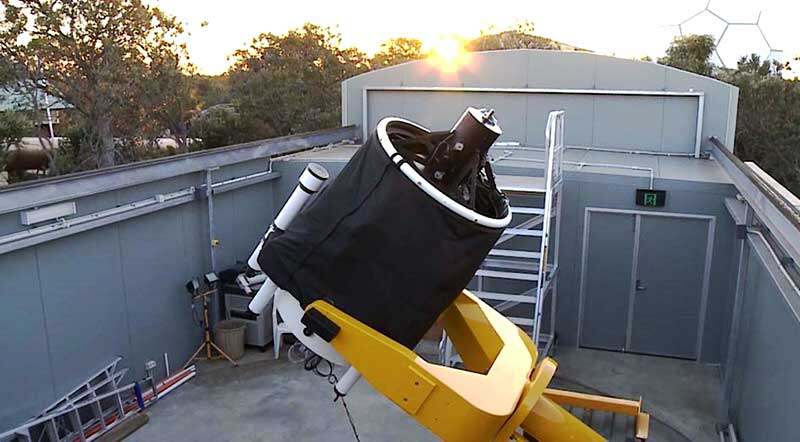A 250 kilogram super-smooth glass mirror in The University of Western Australia’s Zadko telescope, is key to the high-tech equipment’s role in tracking potentially catastrophic asteroids and space junk.


Glass — More than meets the eye is the theme of this year’s National Science Week, which is on until August 21 and celebrates science and technology across Australia.
The Zadko telescope, based at UWA’s Gingin Gravity Precinct north of Perth, is a vital part of the University’s astronomy research.
School of Physics Associate Professor David Coward, who is also the Observatory’s Director, said the telescope was the only metre-class research grade optical instrument at this latitude of the southern hemisphere between the east coast of Australia and South Africa.
It was therefore crucial in filling a gap in global coverage which is more concentrated in the northern hemisphere.
“The Zadko Telescope has an important role in tracking space debris, which is all artificial objects including satellite fragments which can damage working satellites,” Associate Professor Coward said.
“In partnership with the European Space Agency, Zadko also watches out for asteroids that may pose a threat to Earth.”
Associate Professor Coward said Zadko had detected Gamma Ray Burst afterglows, which are the glowing embers of the biggest explosions in the universe.
Care of Zadko’s primary and smaller mirrors, valued at $400,000, needs to be meticulous and Observatory Manager John Moore maintains the glass.
“None of the research and observations would be possible without the glass mirrors being kept super clean,” Mr Moore said.
The Zadko Telescope has been used as part of many large international research projects and the UWA research teams have partnered with a number of organisations including NASA, the European Space Agency, the Parkes radio telescope in Australia and the Laser Interferometer Gravitational-Wave Observatory in the US.








































